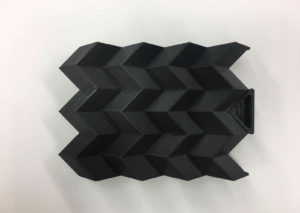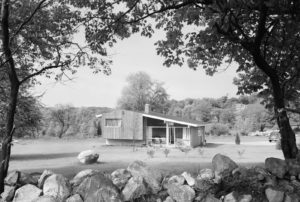Master in Design Studies graduates from a range of program areas were awarded prizes for exemplary theses at Harvard University Graduate School of Design’s 2019 commencement. Their work offers a look into the various ways MDes students are using their studies to examine the processes that shape contemporary life.
 Malinda Seu (MDes ADPD ’19) is the recipient of the 2019 Design Studies Thesis Prize for Cyberfeminism Catalog 1990–2020, which poses the question, “What is a woman anyway?” “The creation and use of this catalog is a social and political act. The texts, organizations, events, and other media aggregated herein push against the dominant understanding of internet history. We are taught to focus on engineering, the military-industrial complex, and the grandfathers who created the architecture and protocol. But the internet is not only a network of cables, servers, and computers. It is an environment that shapes and is shaped by its inhabitants.” Carl A. Pescosolido Professor of Romance Languages and Literatures and of Comparative Literature, Faculty of Arts and Sciences, and GSD Faculty Affiliate Jeffrey Schnapp served as Seu’s Faculty Advisor.
Malinda Seu (MDes ADPD ’19) is the recipient of the 2019 Design Studies Thesis Prize for Cyberfeminism Catalog 1990–2020, which poses the question, “What is a woman anyway?” “The creation and use of this catalog is a social and political act. The texts, organizations, events, and other media aggregated herein push against the dominant understanding of internet history. We are taught to focus on engineering, the military-industrial complex, and the grandfathers who created the architecture and protocol. But the internet is not only a network of cables, servers, and computers. It is an environment that shapes and is shaped by its inhabitants.” Carl A. Pescosolido Professor of Romance Languages and Literatures and of Comparative Literature, Faculty of Arts and Sciences, and GSD Faculty Affiliate Jeffrey Schnapp served as Seu’s Faculty Advisor.

Izzy Kornblatt (MDes CC ’19) is the recipient of the 2019 Design Studies Thesis Prize for Architecture for a New World: Louis Kahn and Philadelphia, a project that seeks to reframe the work of architect Louis Kahn through the lens of modernity rather than an archaic past. “Based upon extensive archival research and interviews, I argue that Kahn and his engineers, working in collaboration, derived a distinctive architecture from the ways of thought embedded in Philadelphia. I show the origins of Kahn’s method to be in the work of Frank Furness, passed on to Kahn by his mentor George Howe. From them Kahn inherited a commitment to an architecture of material and programmatic honesty—an architecture that against the abstraction of high modernism and formalism of the Beaux-Arts sought to reflect the conditions of contemporary life.” Critical Conservation Area Heads George Thomas and Susan Snyder were Kornblatt’s Faculty Advisors.
 Maggie Tsang (MDes ULE ’19) and Isaac Stein (MLA/MDes RR ’20) are the recipients of the Design Studies Thesis Prize for Lines in The Sand:
Rethinking Private Property On Barrier Islands. Tsang and Stein’s research looks at ways in which private property is transforming the landscape of barrier islands and proposes an “alternative land trust” as a way of returning coastal territories to their natural function. “By designing protocols and procedures that reverse prevailing development logics, this trust seeks to reduce public expenditure on privatized shorelines and ultimately to return the barrier island to its ecological function as a coastal defense line.” Rosetta S. Elkin, associate professor of landscape architecture, served as Faculty Advisor.
Maggie Tsang (MDes ULE ’19) and Isaac Stein (MLA/MDes RR ’20) are the recipients of the Design Studies Thesis Prize for Lines in The Sand:
Rethinking Private Property On Barrier Islands. Tsang and Stein’s research looks at ways in which private property is transforming the landscape of barrier islands and proposes an “alternative land trust” as a way of returning coastal territories to their natural function. “By designing protocols and procedures that reverse prevailing development logics, this trust seeks to reduce public expenditure on privatized shorelines and ultimately to return the barrier island to its ecological function as a coastal defense line.” Rosetta S. Elkin, associate professor of landscape architecture, served as Faculty Advisor.

Pamela Lucia Cabrera Pardo (MDes EE ’19) is the recipient of Daniel L Schodek Award for Technology and Sustainability for The Humid Threshold: Cooling hot, humid climates via membrane dehumidification, a project that examines ways in which a membrane material can be designed as a cooling system using water vapor extracted from humid air. “This application could lower the latent heat that drives air conditioning demand in humid climates, and thus increase natural ventilation potential and other passive dry-bulb cooling strategies.” Lecturer in Architecture and Research Associate Jonathan Grinham was Cabrera Pardo’s Faculty Advisor.
 Charlotte Leib (MDes HPDM ’19) is the recipient of the “Best Paper on Housing” prize, awarded by the Joint Center for Housing Studies of Harvard University, for Site and Shelter: Design for the ‘Whole Landscape.’ The thesis explores how the terms ‘site’ and ‘shelter’ were used by modernist architects, landscape architects, planners, and government agencies to conceptualize the built environment during the first decades of the twentieth century. “The thesis concludes by highlighting the efforts of several of Gropius and Wagner’s students who created a non-profit housing corporation, ‘Site and Shelter’, in 1948, to experiment with the communitarian and proto-ecological housing design ideals that they had learned in Wagner’s eponymous course and in Gropius’ design studios.” Associate Professor of Landscape Architecture Sonja Dümpelmann served as Faculty Advisor.
Charlotte Leib (MDes HPDM ’19) is the recipient of the “Best Paper on Housing” prize, awarded by the Joint Center for Housing Studies of Harvard University, for Site and Shelter: Design for the ‘Whole Landscape.’ The thesis explores how the terms ‘site’ and ‘shelter’ were used by modernist architects, landscape architects, planners, and government agencies to conceptualize the built environment during the first decades of the twentieth century. “The thesis concludes by highlighting the efforts of several of Gropius and Wagner’s students who created a non-profit housing corporation, ‘Site and Shelter’, in 1948, to experiment with the communitarian and proto-ecological housing design ideals that they had learned in Wagner’s eponymous course and in Gropius’ design studios.” Associate Professor of Landscape Architecture Sonja Dümpelmann served as Faculty Advisor.